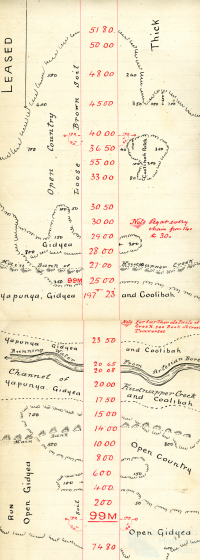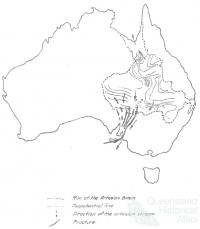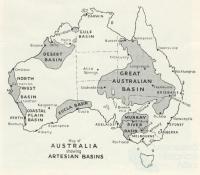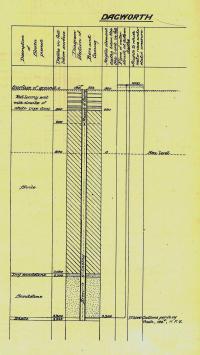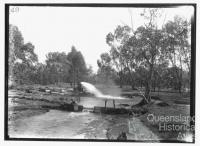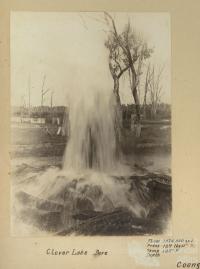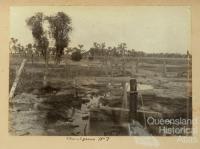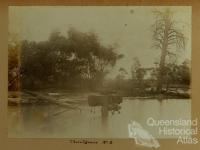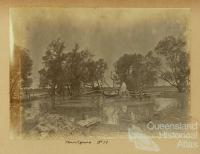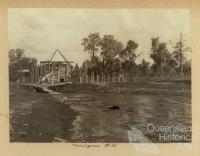- Home
- Quintessential Queensland
- Distinctiveness
- Perceptions
- Perceptions: how people understand the landscape
- From runs to closer settlement
- Geological survey of Queensland
- Mapping a new colony, 1860-80
- Mapping the Torres Strait: from TI to Magani Malu and Zenadh Kes
- Order in Paradise: a colonial gold field
- Queensland atlas, 1865
- Queensland mapping since 1900
- Queensland: the slogan state
- Rainforests of North Queensland
- Walkabout
- Queenslanders
- Queenslanders: people in the landscape
- Aboriginal heroes: episodes in the colonial landscape
- Australian South Sea Islanders
- Cane fields and solidarity in the multiethnic north
- Chinatowns
- Colonial immigration to Queensland
- Greek Cafés in the landscape of Queensland
- Hispanics and human rights in Queensland’s public spaces
- Italians in north Queensland
- Lebanese in rural Queensland
- Queensland clothing
- Queensland for ‘the best kind of population, primary producers’
- Too remote, too primitive and too expensive: Scandinavian settlers in colonial Queensland
- Distance
- Movement
- Movement: how people move through the landscape
- Air travel in Queensland
- Bicycling through Brisbane, 1896
- Cobb & Co
- Journey to Hayman Island, 1938
- Law and story-strings
- Mobile kids: children’s explorations of Cherbourg
- Movable heritage of North Queensland
- Passages to India: military linkages with Queensland
- The Queen in Queensland, 1954
- Transient Chinese in colonial Queensland
- Travelling times by rail
- Pathways
- Pathways: how things move through the landscape and where they are made
- Aboriginal dreaming paths and trading ways
- Chinese traders in the nineteenth century
- Introducing the cane toad
- Pituri bag
- Press and the media
- Radio in Queensland
- Red Cross Society and World War I in Queensland
- The telephone in Queensland
- Where did the trams go?
- ‘A little bit of love for me and a murder for my old man’: the Queensland Bush Book Club
- Movement
- Division
- Separation
- Separation: divisions in the landscape
- Asylums in the landscape
- Brisbane River
- Changing landscape of radicalism
- Civil government boundaries
- Convict Brisbane
- Dividing Queensland - Pauline Hanson’s One Nation Party
- High water mark: the shifting electoral landscape 2001-12
- Hospitals in the landscape
- Indigenous health
- Palm Island
- Secession movements
- Separate spheres: gender and dress codes
- Separating land, separating culture
- Stone walls do a prison make: law on the landscape
- The 1967 Referendum – the State comes together?
- Utopian communities
- Whiteness in the tropics
- Conflict
- Conflict: how people contest the landscape
- A tale of two elections – One Nation and political protest
- Battle of Brisbane – Australian masculinity under threat
- Dangerous spaces - youth politics in Brisbane, 1960s-70s
- Fortress Queensland 1942-45
- Grassy hills: colonial defence and coastal forts
- Great Shearers’ Strike of 1891
- Iwasaki project
- Johannes Bjelke-Petersen: straddling a barbed wire fence
- Mount Etna: Queensland's longest environmental conflict
- Native Police
- Skyrail Cairns (Research notes)
- Staunch but conservative – the trade union movement in Rockhampton
- The Chinese question
- Thomas Wentworth Wills and Cullin-la-ringo Station
- Separation
- Dreaming
- Imagination
- Imagination: how people have imagined Queensland
- Brisbane River and Moreton Bay: Thomas Welsby
- Changing views of the Glasshouse Mountains
- Imagining Queensland in film and television production
- Jacaranda
- Literary mapping of Brisbane in the 1990s
- Looking at Mount Coot-tha
- Mapping the Macqueen farm
- Mapping the mythic: Hugh Sawrey's ‘outback’
- People’s Republic of Woodford
- Poinsettia city: Brisbane’s flower
- The Pineapple Girl
- The writers of Tamborine Mountain
- Vance and Nettie Palmer
- Memory
- Memory: how people remember the landscape
- Anna Wickham: the memory of a moment
- Berajondo and Mill Point: remembering place and landscape
- Cemeteries in the landscape
- Landscapes of memory: Tjapukai Dance Theatre and Laura Festival
- Monuments and memory: T.J. Byrnes and T.J. Ryan
- Out where the dead towns lie
- Queensland in miniature: the Brisbane Exhibition
- Roadside ++++ memorials
- Shipwrecks as graves
- The Dame in the tropics: Nellie Melba
- Tinnenburra
- Vanished heritage
- War memorials
- Curiosity
- Curiosity: knowledge through the landscape
- A playground for science: Great Barrier Reef
- Duboisia hopwoodii: a colonial curiosity
- Great Artesian Basin: water from deeper down
- In search of Landsborough
- James Cook’s hundred days in Queensland
- Mutual curiosity – Aboriginal people and explorers
- Queensland Acclimatisation Society
- Queensland’s own sea monster: a curious tale of loss and regret
- St Lucia: degrees of landscape
- Townsville’s Mount St John Zoo
- Imagination
- Development
- Exploitation
- Transformation
- Transformation: how the landscape has changed and been modified
- Cultivation
- Empire and agribusiness: the Australian Mercantile Land and Finance Company
- Gold
- Kill, cure, or strangle: Atherton Tablelands
- National parks in Queensland
- Pastoralism 1860s–1915
- Prickly pear
- Repurchasing estates: the transformation of Durundur
- Soil
- Sugar
- Sunshine Coast
- The Brigalow
- Walter Reid Cultural Centre, Rockhampton: back again
- Survival
- Survival: how the landscape impacts on people
- Brisbane floods: 1893 to the summer of sorrow
- City of the Damned: how the media embraced the Brisbane floods
- Depression era
- Did Clem Jones save Brisbane from flood?
- Droughts and floods and rail
- Missions and reserves
- Queensland British Food Corporation
- Rockhampton’s great flood of 1918
- Station homesteads
- Tropical cyclones
- Wreck of the Quetta
- Pleasure
- Pleasure: how people enjoy the landscape
- Bushwalking in Queensland
- Cherbourg that’s my home: celebrating landscape through song
- Creating rural attractions
- Festivals
- Queer pleasure: masculinity, male homosexuality and public space
- Railway refreshment rooms
- Regional cinema
- Schoolies week: a festival of misrule
- The sporting landscape
- Visiting the Great Barrier Reef
By:
Owen Powell The Great Artesian Basin (GAB) is a geological curiosity. What might be described as a ‘giant geological sponge’, it consists of alternating layers of water bearing sandstone wedged between impermeable mudstones and siltstones. Covering approximately one fifth of the Australian land mass, water has been obtained from depths of up to 2000 metres with temperatures varying from 30 to 100 degrees celsius in the deeper areas.
In the south-west of the basin, water has been dated at two million years since last exposed to daylight. Water enters the basin as rainfall along outcropping intake beds and due to differences in elevation, becomes pressurised within the aquifer. Fractures in the earth’s crust result in natural springs. Bores penetrate impermeable layers and this allows water to rise to the surface.
Banjo Paterson
Penned in 1896, A.B. (Banjo) Paterson’s ‘Song of the Artesian Water’, celebrated human triumph over nature as well its hidden treasures ‘down below’. Forsaken by drought, people turn to ‘Canadian Bill’, a steam powered drilling rig. Plugging ‘downwards at a thousand feet of level’, Paterson suggested that artesian water came from the very gates of hell where, ‘knocking on the roof of satan’s dwellin’, people seemed to be entering an uncertain pact.
‘Song of the Artesian Water’ suggests Paterson had intimate knowledge about drilling bores. This may have come about the previous year, while holidaying at Dagworth station near Winton. Known more famously as the place where he wrote ‘Waltzing Matilda’, at 3335 feet Dagworth had a particularly deep and unusual bore. The water came out at 196 degrees fahrenheit, close to boiling, and yielded an impressive 1,250,000 gallons per day. This bore and others seen on his journey from Rockhampton may have been source of inspiration. Paterson may have also felt encouraged to write about artesian water by Rudyard Kipling’s praise of his line ‘Till I drink artesian water from a thousand feet below’ from his earlier ballad ‘A Bushman’s Song’ written in 1892.
Mystery water
The discovery of artesian supplies in Queensland in the late 1880s, captivated the imagination of poets, scientists and people. At the time successful drilling operations were reported in the colonial press and widely talked about. Charleville’s first bore was drilled in 1889 to a depth of 1371 feet. Flowing under tremendous pressure, the water threw up small rocks and fossilised ferns into the air, remnants of an ancient landscape. The water rose to a height of 50 feet above the casing and it took up to 12 men to cap the bore.
This water, however, was an enigma. While residents rejoiced at the discovery of abundant supplies in a landscape dominated by drought, there was considerable uncertainty where the water came from and more importantly, how long it would last. On pastoral runs, bores were left to flow into dry creeks and earth drains and within a few years there were alarming signs of diminishing bore pressure.
Debate regarding the need to conserve Queensland’s water resources, both surface and groundwater, evolved alongside growing awareness of the GAB’s complex geological structure and hydrology. Veiled by the surface, knowledge could not be obtained by simple observation, rather, by piecing together disparate fragments of geological evidence, gradually over time.
Early speculation to discovery
The GAB began not so much as a phenomenon, but a theoretical misconception that rivers across eastern Australian did not carry their expected discharge. In 1878, T.E. Rawlingson claimed that between the junction of the Ovens to the Goulburn River and the Murray River in northern Victoria, 850 cubic feet per minute of water was lost in a course of a few miles, while during flood, the Barcoo River and Cooper’s Creek appeared to convey large amounts of water into the interior where evaporation alone was considered insufficient to explain its disappearance. Rawlingson thought this water would be found underground and advocated deep drilling to test the theory.
The first major evidence of the GAB came the same year following the sinking of a shallow bore at Killara station west of Bourke. Water was tapped at 140 feet, however, much of the ‘risk’ was taken out by drilling close to an existing mud spring fed by the artesian basin. Shallow bores yielded modest results and failed to capture public imagination of inexhaustible supplies. Nevertheless, they contributed to an awareness of the possible extent and structure of the GAB.
In a paper read in 1884, John Falconer cited repeating patterns of stratified water bearing layers recorded along Queensland’s western railway as evidence of the GAB. He claimed artesian water could be found at the depth of 200 feet in the Maranoa district while due to differences in sea level, water would be obtained in Charleville at roughly 60 feet. This later proved to be the case with a supply 18,000 gallons per day struck at 53 feet in which he concluded that it would be ‘difficult to select a place west of Roma, where artesian water could not be obtained’.
The costs associated with deep drilling dissuaded attempts to properly test the theory. Subsequently it was the occurrence of drought in the 1880s that provided a catalyst for the Queensland government to establish a test bore in Blackall. Drilling commenced in 1885 though due to a series of technological issues and a blow out of wages, completion was delayed.
Backed by large amounts of British capital, pastoral investment companies tried their luck and succeeded. Commencing in 1886, Canadian driller J.S. Loughead, contracted by the Squatting Investment Company, began drilling on the Thurulgoona property near Cunnamulla. A resident of Barringun on the New South Wales border remembered the day Loughead passed through along the way to Thurulgoona. Predating Banjo Paterson’s ‘Song of the Artesian Water’, Loughead confidently declared that he would either ‘strike hell or water’. After several months a supply of 3000 gallons per day was obtained at just over 1000 feet. Later the bore was deepened and by 1890, a depth of 1193 feet yielded an impressive supply of 80,000 gallons per day.
The myth of subterranean leakage
By 1897, 541 bores had been drilled, or were in the process of being drilled across Queensland, the majority on privately managed leasehold land. As drilling operations fanned into the west, new theories emerged to encompass the GAB’s scale and complexity. Speculation continued into the twentieth century including some extremist ideas that the waters came from the Papua New Guinean highlands. However, at least within official circles, three principle theories explained both origins and supply: the Meteoric, Plutonic and Connate.
The Meteoric theory followed more conventional understanding of groundwater hydrology, suggesting the basin was largely, if not entirely derived from rainfall absorbed by outcropping intake beds. The Plutonic theory, however, claimed waters were derived from deep sources in the Earth, while the Connate theory suggested the basin was a kind of reservoir trapped between impermeable layers that formed as the crust developed over millions of years.
Meteoric theory was distinctive, not so much because of its supposed credibility, but as it was most compatible with being ‘renewable’. Many speculated that the artesian basin linked to the Great Australian Bight and drew maps which justified profligate use because it prevented ‘loss’ to the ocean. In 1920, a paper by J. Richert produced a map of this phenomenon. He suggested the origins of the water were plutonic and meteoric claiming that the volume contained in the basin could not be exhausted by existing flowing wells in 6000 years.
Who owns the water?
The head of the Water Supply Department J.B. Henderson ignored speculation. Concerned about diminishing supplies he pushed for earlier regulatory control in the form of the Water Supply Bill of 1891. This was a radical piece of legislation which sought to overturn a fundamental principle of English common law. Instead of the property of landholders, all water, whether in water courses or underground, was to be vested in the crown.
Needless to say this was unpopular with pastoralist and free marketers who criticised the bill. Without precise knowledge of the artesian basin’s complex geological structure, there were other ‘plausible’ explanations as to why flows were diminishing: bore clustering, drought or simply corroded bore casings. Inter-colonial rivalry was evident because Queensland was at the head of the supply, some thought there was little benefit in curbing use if New South Wales didn't follow.
The ability of skeptics to exploit uncertainty and prevent environmental regulation finds uncanny parallels with recent climate change debate. Supporters of the Water Supply Bill subsequently had to bide their time until the political climate was more favourable. Two decades after the initial bill was introduced, the Queensland government eventually passed the Rights in Water and Water Conservation and Utilisation Act 1910. New South Wales later followed suit with the Water Supply Act 1912. This year also marked the first series of interstate conferences which highlighted the need to continue investigating the GAB and accurately delineate its extent.
While legislation would prove critical for future water management in Queensland, interstate cooperation did not immediately prevent the diminution of artesian supply throughout the twentieth century. Along with bores, hundreds of natural springs ceased flowing. The Southern Cross windmill became a ubiquitous feature of the western Queensland landscape. Often used to pump up artesian supplies, it is partly testament to policy failure.
From exploitation to management
Currently there is greater recognition by pastoralists and policy makers to more efficiently utilise artesian resources. Several programs have operated since 1989 to cap bores and replace drains with piping with the aim of reducing waste and restoring water pressure. Up to 2005, 4600 kilometres of earth drains were replaced state-wide and, as a result, many bores and natural springs flow freely once more.
The GAB remains the life blood of western Queensland livelihoods, however, it retains a wider historical significance for all Queenslanders. Scientific curiosity about the GAB played a crucial role in some of the earliest debates concerning the sustainable management of Queensland’s most important natural resource: water.
Note:
1 foot = 30.48 centimetres
1 gallon = 4.54 litres
1 cubic foot = 28.316 litres
100 degrees fahrenheit = 37.78 degrees celsius
References and Further reading (Note):
O. Powell, ‘Warrego country: water, people, landscape’, PhD thesis, University of Queensland, 2011
References and Further reading (Note):
C. Semmler, The banjo of the bush: the life and times of A.B. Paterson, Brisbane, University of Queensland Press, 1974
References and Further reading (Note):
T. Rawlingson, ‘Subterranean drainage in the interior,’ Transactions and proceedings and report of the philosophical society of Adelaide, South Australia, 1, 1878
References and Further reading (Note):
J. Falconer, Water supply: springs and their origin: artesian wells and water supply: Queensland gold deposits, Brisbane, Warwick and Sapsford, 1886
References and Further reading (Note):
J.W. Gregory, ‘The flowing wells of western Queensland,’ Queensland geographical journal, 30, 1916
References and Further reading (Note):
J.M. Powell, Plains of promise rivers of destiny: water management and the development of Queensland 1824-1990, Brisbane, Boolarong Publications, 1991
Now the stock have started dying, for the Lord has sent a drought,
But we're sick of prayers and Providence - we're going to do without,
With the derricks up above us and the solid earth below,
We are waiting at the lever for the word to let her go.
Sinking down, deeper down,
Oh, we'll sink it deeper down:
As the drill is plugging downward at a thousand feet of level,
If the Lord won't send us water, oh, we'll get it from the devil;
Yes, we'll get it from the devil deeper down.
Now, our engine's built in Glasgow by a very canny Scot,
And he marked it twenty horse-power, but he didn't know what is what.
When Canadian Bill is firing with the sun-dried gidgee logs,
She can equal thirty horses and a score or so of dogs.
Sinking down, deeper down
Oh, we're going deeper down:
If we fail to get the water, then it's ruin to the squatter,
For the drought is on the station and the weather's growing hotter,
But we're bound to get the water deeper down.
But the shaft has started caving and the sinking's very slow,
And the yellow rods are bending in the water down below,
And the tubes are always jamming, and they can't be made to shift
Till we nearly burst the engine with a forty horse-power lift,
Sinking down, deeper down,
Oh, we're going deeper down:
Though the shaft is always caving, and the tubes are always jamming,
Yet we'll fight our way to water while the stubborn drill is ramming-
While the stubborn drill is ramming deeper down.
But there's no artesian water, though we're passed three thousand feet,
And the contract price is growing, and the boss is nearly beat.
But it must be down beneath us, and it's down we've got to go.
Though she's bumping on the solid rock four thousand feet below,
Sinking down, deeper down,
Oh, we're going deeper down:
And it's time they heard us knocking on the roof of Satan's dwellin',
But we'll get artesian water if we cave the roof of hell in-
Oh we'll get artesian water deeper down.
But it's hark! the whistle's blowing with a wild, exultant blast,
And the boys are madly cheering, for they've struck the flow at last:
And it's rushing up the tubing from four thousand feet below,
Till it spouts above the casing in a million-gallon flow.
And it's down, deeper down-
Oh, it comes from deeper down:
It is flowing, ever flowing, in a free, unstinted measure
From the silent hidden places where the old earth hides her treasure-
Where the old earth hides her treasures deeper down.
And it's clear away the timber and it's let the water run,
How it glimmers in the shadow, how it flashes in the sun!
By the silent belts of timber, by the miles of blazing plain
It is bringing hope and comfort to the thirsty land again.
Flowing down, further down:
It is flowing further down
To the tortured thirsty cattle, bringing gladness in its going;
Through the droughty days of summer it is flowing, ever flowing-
It is flowing, ever flowing, further down.
A.B. (Banjo) Paterson, 'Song of the Artesian Water', The bulletin, 17, 1896

